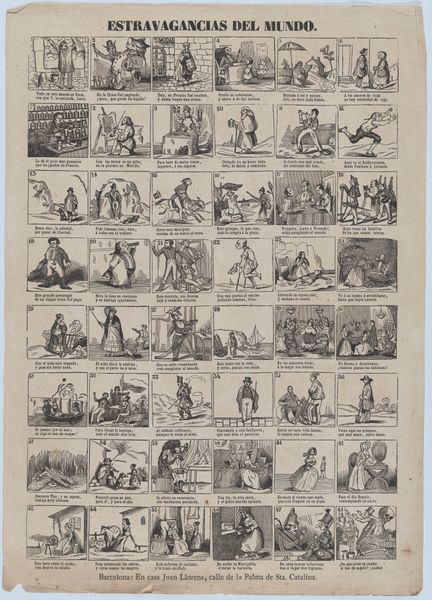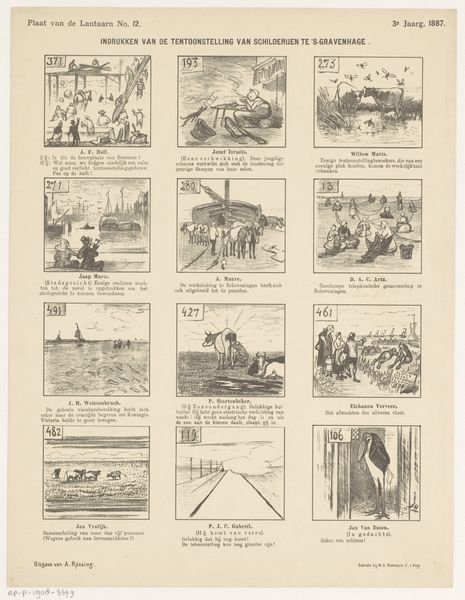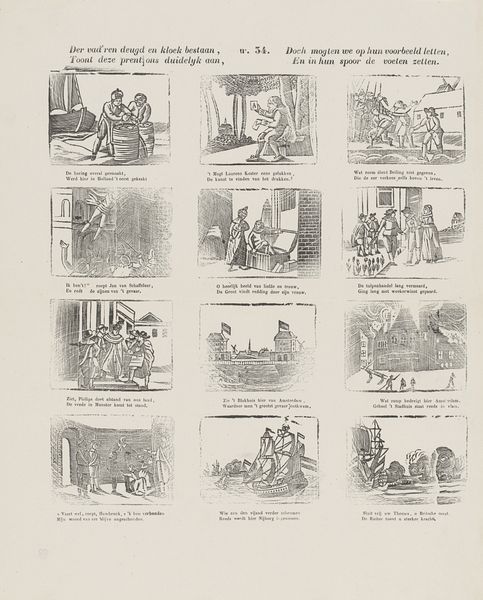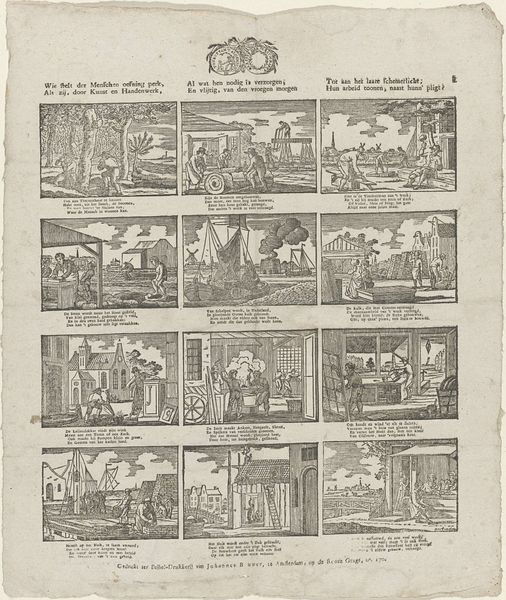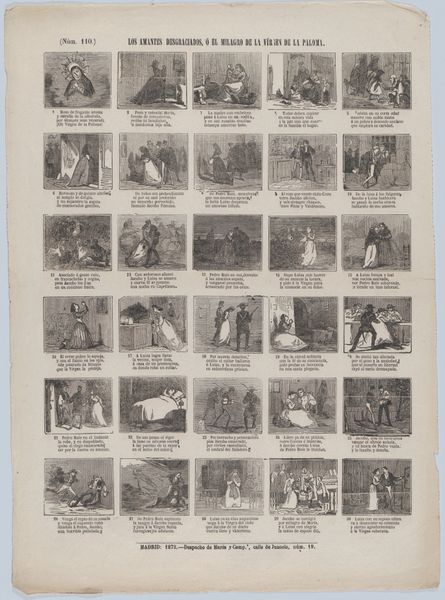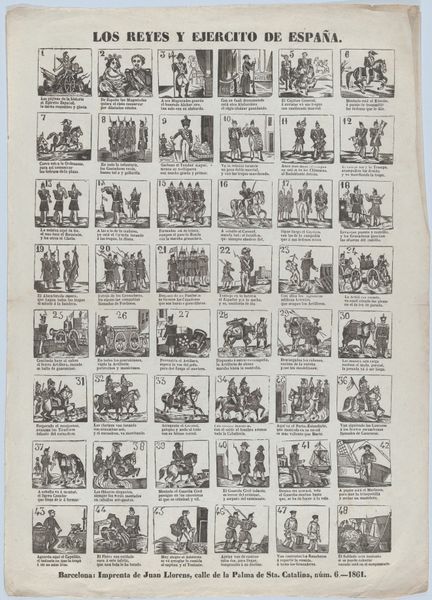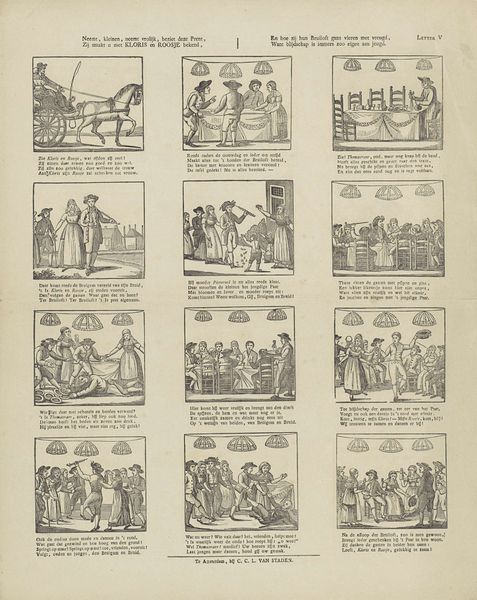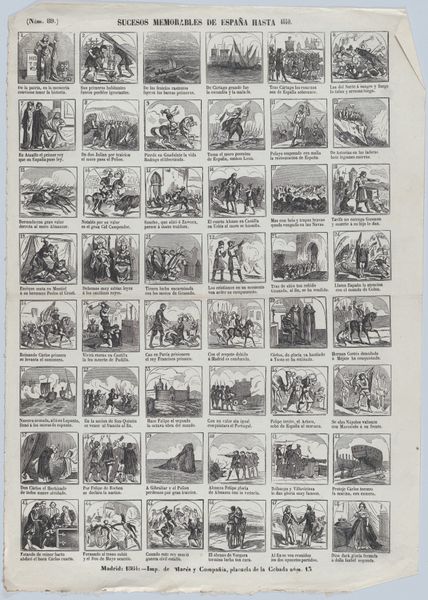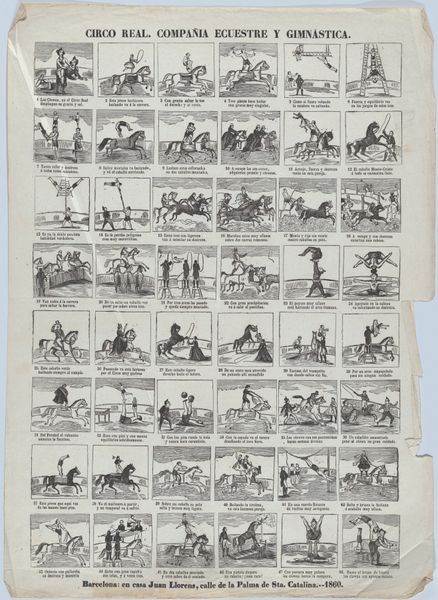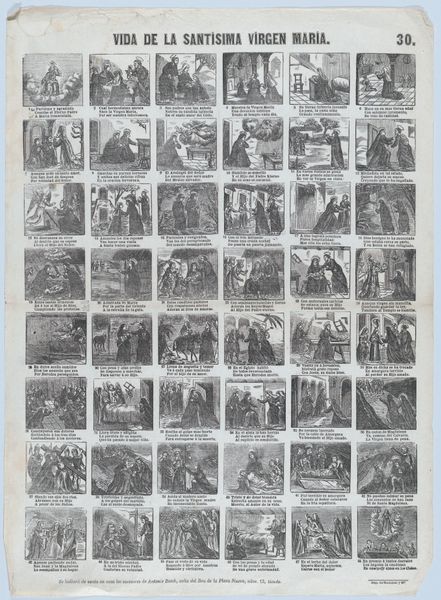
Leer, jongheid, hoe de deugd, geprent in d'eerste jaren, / De mensch uit 't nedrig stof tot d'eersten stand doet varen / Apprenez, par ceci que la vertu conduit, / A la gloire aux honneurs, et que le bien s'en suit 1800 - 1833
0:00
0:00
philippusjacobusbrepols
Rijksmuseum
graphic-art, print, etching, engraving
#
portrait
#
graphic-art
#
medieval
#
narrative-art
# print
#
etching
#
figuration
#
line
#
genre-painting
#
history-painting
#
engraving
Dimensions: height 371 mm, width 310 mm
Copyright: Rijks Museum: Open Domain
Curator: At the Rijksmuseum, we're looking at a graphic art print by Philippus Jacobus Brepols, dating from the early 19th century, titled "Leer, jongheid, hoe de deugd, geprent in d'eerste jaren, / De mensch uit 't nedrig stof tot d'eersten stand doet varen / Apprenez, par ceci que la vertu conduit, / A la gloire aux honneurs, et que le bien s'en suit". Editor: It feels… illustrative. Like a page torn from a moralistic children's book, or maybe a primer for aspiring gentry? Curator: It's a fascinating example of early printmaking techniques. The artist utilizes etching and engraving, creating a series of narrative vignettes. Note the repetitive use of line to construct forms and dictate shading. Considering Brepols’ historical context and social status, how did his labor influence the creation and potential distribution of prints such as this? The uniformity also interests me; suggesting a mechanized mode of production. Editor: The overall composition draws me to the linear aspect. It's quite ordered: little square images, text above, giving each scene a distinct boundary. Semiotically, the line implies restraint and suggests the virtues in these narratives were meant to tightly prescribe behaviours. Curator: Absolutely. Each panel visualizes aspects of youthful virtue leading to success. This wasn’t simply art; it served as a tool, subtly shaping young minds within a burgeoning, literate society, reflective of the didactic trend in early 19th century printed matter and how that impacts access to morality. Editor: And the deliberate selection of simple narrative archetypes. It removes all ambiguity; a child in the intended audience instantly grasps the correlation. Materially, a simple print like this democratized the art experience. Curator: Indeed! The relative affordability and reproducability compared to painting brought it into more hands, and so created opportunities to promote social norms about aspiration. Its form dictated that access. Editor: Looking at it from an purely artistic standpoint, I am captivated by the balance the artist strikes between conveying both a broader moral narrative through composition and maintaining detailed clarity in these individually small narrative images. Curator: And to consider that Brepols made such an efficient and portable promoter of aspirational ideals that was materially accessible and so capable of shaping values is really insightful. Editor: I’m really struck at how effective this print is as both social tool and object of craft in a single, carefully made sheet.
Comments
No comments
Be the first to comment and join the conversation on the ultimate creative platform.
